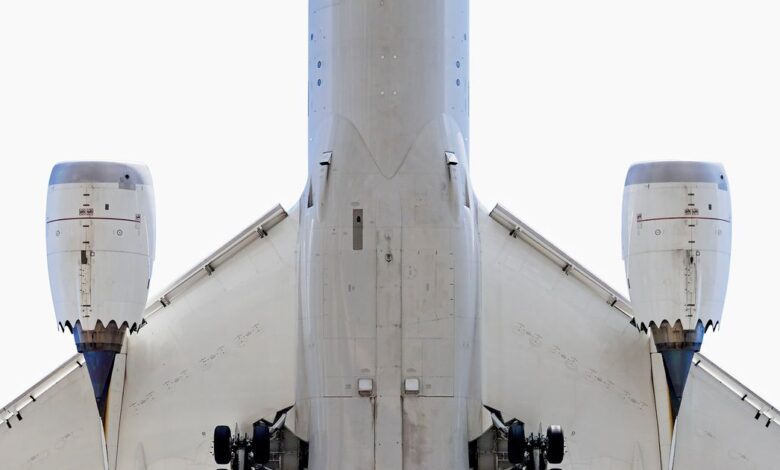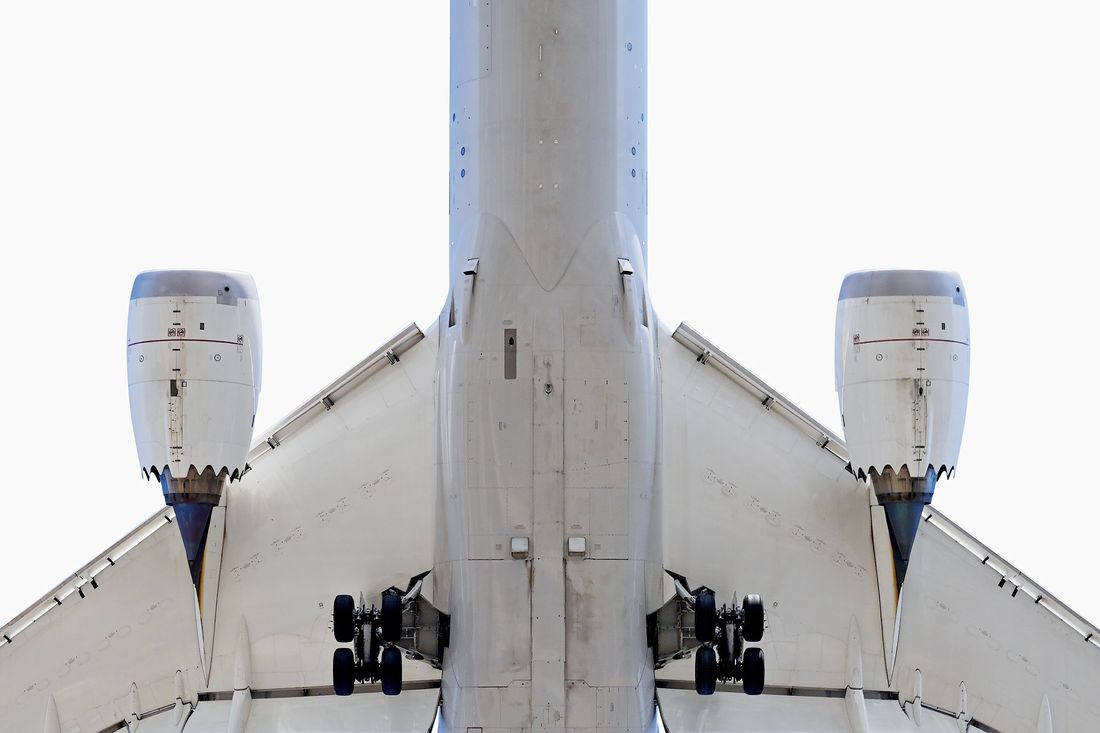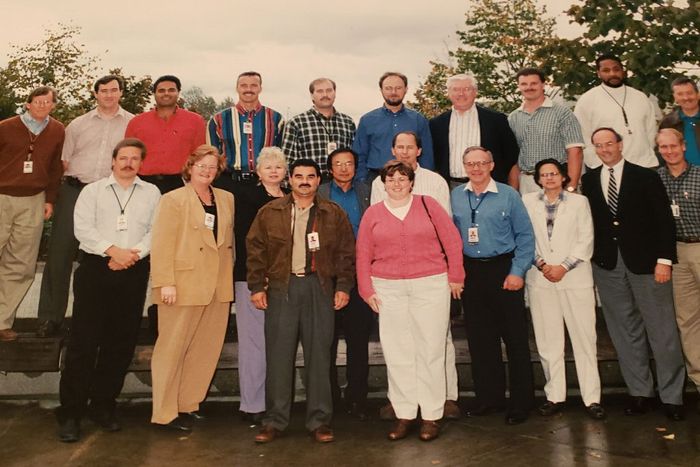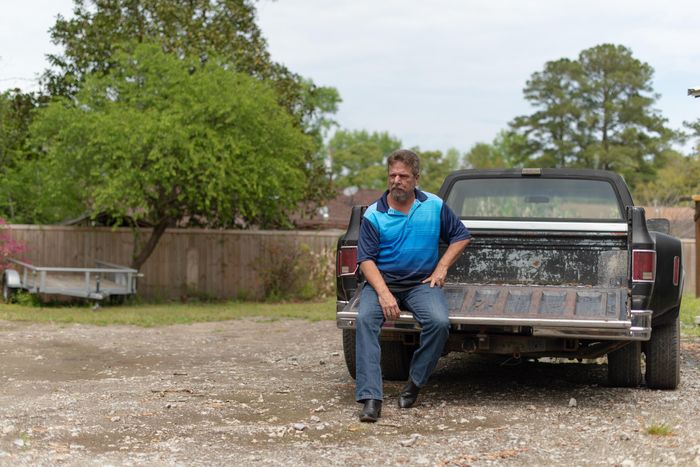

A United Airlines 787-8 Dreamliner.
Photo: Jeffrey Milstein
Vicky Stokes was standing by the stove, tending a pot of gumbo, when a friend texted her to say that a second Boeing whistleblower was dead. It was a gray morning at the beginning of May, and she was at home in Alexandria, Louisiana, a little city midway between Shreveport and Baton Rouge. Rain had been falling in hard bursts since dawn.
She didn’t know this whistleblower. His name was Josh Dean, and he used to be a quality inspector for Spirit AeroSystems, which makes, among other things, fuselages for Boeing’s 737 Max — the aircraft involved in multiple deadly crashes and near misses over the past six years. He’d been fired in April 2023 because, he claimed, he had discovered manufacturing defects that his managers preferred not to fix. “Serious and gross misconduct by senior quality management” is how he put it in a complaint to the Federal Aviation Administration.
Dean was 45 years old and healthy until, in mid-April, he was killed by a rare and aggressive bacterial infection. Shortness of breath progressed quickly to pneumonia; he was sedated and connected to machines for two weeks. At some point, he had a stroke and doctors thought that if he survived, they might have to amputate his hands and feet.
“That’s a terrible way to die,” Vicky’s son Rodney Barnett said, and Vicky nodded her head sympathetically.
Rodney, who was sitting on the couch across from his mother, had gotten texts about Dean’s death, too. So had his brothers Mike and Robbie, because the first Boeing whistleblower to die this spring was the fourth Barnett brother.
Mitch Barnett was Vicky’s youngest son, and like Dean he was an aircraft quality inspector. He had worked at Boeing for more than 30 years before he retired in 2017, immediately after a doctor told him his heart might explode from stress if he didn’t. Since then, he had been telling anyone who would listen — reporters, documentarians, federal regulators — the same things he had been telling Boeing managers for years: So many corners were being cut, so many rules ignored and laws broken, that he feared jets would start falling out of the sky.
In 2017, Mitch filed a federal complaint alleging that he’d been punished, harassed, and ostracized for speaking up. As part of the complaint, he was asking for a potentially substantial amount in compensatory damages — pay for the ten years he’d expected to keep working at Boeing, back pay, and lost benefits. And there were claims for “emotional distress and mental anguish,” too: He had been diagnosed with PTSD and anxiety, which he linked to the way he was treated at Boeing.
“I tried to get him to drop it two or three years ago,” Vicky said. “I was worried. I mean, that’s just like David and Goliath. Boeing has fingers everywhere. So, you know, you’re fighting a lot of things and a lot of people. But he was more worried about the public safety. He said, ‘If one of those planes went down because of something I signed off on, I couldn’t live with myself.’”
So Mitch kept at it, year after year. In early March, he was deposed as part of his federal whistleblower complaint in Charleston, South Carolina, where he’d worked at Boeing’s 787 assembly plant. He testified for two days, occasionally with the fidgety impatience of a man who had relived the same bad memories too many times, but confident, adamant.
On the morning of the third day, he was found in the driver’s seat of his orange Dodge Ram in a Holiday Inn parking lot, shot once through the head, a silver Smith & Wesson in his right hand. There was a notebook on the seat next to him in which he’d scribbled, among other things, “I can’t do this any longer!!! Enough!! Fuck Boeing!!!”
And yet, almost two months later, on that rainy morning in early May, his death had not officially been ruled a suicide. It was still an apparent suicide, which the news stories that Vicky and her boys were getting pinged about were careful to note. Simply placing two facts in proximity to each other — a Boeing whistleblower killed by a mysterious infection weeks after the death of one of the company’s most prominent critics — cast a conspiratorial shadow over both. For a few days in the spring, it was not crazy to wonder if one of the world’s largest aircraft manufacturers was assassinating its perceived enemies.
Vicky believes the truth lies elsewhere. “I don’t think Boeing killed Mitch,” she said that morning. “But I blame them. They’re responsible. They might as well have been sitting in that truck with him, holding the gun. With their finger on the trigger.”
Mitch Barnett (front row, far left) with colleagues at Boeing’s facility in Everett, Washington, circa 1988.
Photo: Courtesy of the Barnett family
Mitch Barnett’s official first name, the one on his birth certificate and in the legal briefs, was John, and that’s what police and newscasters used when he died. But his mother called him Mitch, after his middle name, Mitchell. So did his brothers and most of his friends, unless they called him Swampy, which is short for Swamp Dawg and a pretty good nickname for a guy from Louisiana with a fondness for swamp puppies, or, as they are more commonly known, alligators. Mitch collected alligator heads, real ones, and alligator figurines and alligator decals, and he had a tattoo of an alligator that appears to be busting out of the left side of his chest. When he raced at Evergreen Speedway, near Seattle, he painted his car to look like an alligator and passed out little plastic alligators to kids in the grandstand, and years later, when he raced dirt tracks in Louisiana, he put a big yellow alligator eye on the front of his rig. He had lived half his life far from Rapides Parish and the Cocodrie Swamp, but Mitch never really left Louisiana, not completely.
He was born in California, near the Oregon border, but Vicky separated from her husband when Mitch was 2 and she took her boys back to Alexandria, her hometown. She got a job at England Air Force Base, which is now Alexandria’s airport, and usually worked a second one, too, and sometimes a third to keep food on the table. Her eldest, Rodney, five years older than Mitch, kept his brothers in line, which wasn’t terribly difficult because they knew how hard their mother worked.
Mitch enlisted in the Air Force after high school. He completed eight months of training, but, at the end of that, the specialty he was promised — microwave-radio technician — wasn’t available. “So they gave him a choice,” Vicky said. “Either pick another field or get out, and he said, ‘Give me my papers.’”
He drove a cab in Alexandria for a while until, in the early 1980s, he began a circuitous and serendipitous route to Boeing. Vicky had remarried six years before, in 1977, and her husband was a manager with Rockwell International working on the B-1 bomber in Palmdale, California. He helped Mitch get a job with Rockwell working on the space shuttle, which Rockwell built for NASA. Mitch made molds for the heat-shield tiles for Atlantis out of silicone and plaster, precision work because any gaps in those tiles put the shuttle at risk of burning up on reentry. (In 2003, the shuttle Columbia exploded after one of the heat-shield tiles was damaged.) Once Atlantis was complete, in the spring of 1985, he got hired as an electrician for the B-1 project. “I ran wires, hooked up connectors,” he said once. “Anything, really, to do with wiring.”
About two years into that job, Mitch applied to work on the B-2 Stealth bomber at Boeing. He got an offer, but about the time his security clearance came through, someone at Boeing called him. Turned out the company had overhired for the B-2, but there was a job for him in Everett, Washington, as an electrician on the 747-400, if he wanted it.
He did. Almost immediately, he started training after hours to be a quality inspector.
On June 2, 1978, a Japan Airlines Boeing 747 touched down on a runway in Osaka. It bounced, floating above the tarmac for a few seconds, then the pilot pulled the nose up, a standard maneuver called flaring. But he overdid it, pitched the nose too steeply, so when the plane came down again, the first part to hit the ground, with considerable force, was the tail. Twenty-five people were hurt, two seriously, and the tail section of the plane was pretty banged up. Among the damage was a crack in the aft pressure bulkhead, a dome-shaped panel that helps keep pressurized air inside the cabin.
Boeing sent an AOG team — “airplanes on ground” — to repair the 747. Engineers and mechanics worked for nearly three weeks to replace part of the fuselage and the bottom half of the pressure bulkhead, and when they were done, a Boeing quality-assurance inspector signed off on their work.
But that bulkhead had not been properly repaired. Seven years later, in August 1985, it ruptured, releasing a burst of pressurized cabin air that blew off the vertical tail fin and severed the hydraulic lines pilots use to control the plane. This happened at 24,000 feet, 12 minutes after the plane left Tokyo with 509 passengers and 15 crew members. All but four of them died when Japan Airlines Flight 123 flew into a mountain at nearly 400 miles per hour.
Mitch knew about JAL 123. It’s part of the canon of Boeing quality assurance, the kind of story managers will tell new inspectors because it reinforces how critical their jobs are, for one, and for another, the importance of complete, detailed records. Boeing’s AOG team kept meticulous records, which allowed Japanese investigators seven years later to figure out exactly where and how that bulkhead had failed, which in turn meant understanding how to prevent that same failure from happening again. (Josh Dean surely knew about it, too. The major flaw he alleged managers didn’t want fixed were holes improperly drilled in the aft pressure bulkhead.)
“The mantra at Boeing, the tradition at Boeing, was never accept, never create, and never pass on a defect,” said Dave Kitson, a former quality manager who retired in 2015. “The engineering has to be perfect; the build has to be perfect. Whatever your job, whatever you were doing, people understood, ‘Hey, my family’s gonna ride on this thing. It’s got to be perfect.’”
That’s what Mitch was shooting for: perfection. By all accounts — co-workers, performance reports, his career trajectory — he was good at his job. He spent more than a year as an inspector on the 747-400 line at Boeing’s plant in Everett, then moved to receiving, where he made sure incoming parts were up to spec and traveled the world to check out manufacturing facilities at Boeing’s suppliers. From there, he moved to what was called the planning group, which figured out how all the inspections could best be done, then he became an auditor, basically making sure the entire inspection process, the people and the procedures, was working correctly. When he was lead auditor for receiving inspections, he developed an 11-course curriculum to train new auditors; after that, he was promoted into management, overseeing quality in the production of 747s and, finally, managing the inspectors in receiving.
He was able to do all of that, notably, without being a prick.
“He was the consummate professional,” Kitson said, “and yet he was a folksy kind of guy, the way he approached it. It was a strange mix.”
Mitch might have been the last person you’d pick out of a lineup as making sure some of the most sophisticated machines on the planet were assembled with precision. He wore a thick mustache and a full goatee, and he spoke in a honeyed Louisiana drawl about his momma’s cooking and his two favorite teams, LSU and whoever was playing Alabama that week. He’d change your flat tire, and he’d probably give you the shirt off his back as long as you didn’t mind its not having any sleeves.
He also had an astonishing memory — for Boeing’s encyclopedia of procedures and processes, for faces, for conversations he’d had last week, last month, last year. That makes for an effective manager: someone who knows your job and also knows you, who remembers your son’s graduation, who asks after that aunt who’d taken ill, who can talk to you like he’s actually interested because he actually is.
“You’d end up working twice as hard as you ever have in your life, and you’re wondering, How’d he get me to do that?” Kitson said. “And he did it all with a joke and a pat on the back.” When Kitson was sent to a new Boeing facility in South Carolina to set up the quality division, Mitch was one of his first hires. “When I saw his name come up, I was all over it,” he said. “He was the guy. There was absolutely no doubt about it.”
For many decades, Boeing was run by engineers, men and women who thought the company would be successful if it built the best commercial airliners in the world. It launched the 747 jumbo jet, the first wide-body in commercial operation, and the 737, one of the best-selling planes in aviation history. Since 1967, Boeing has built almost 12,000 of them, 8,000 of which are still flying.
In the late 1990s, though, Boeing acquired rival McDonnell Douglas, and there was an immediate turf war over who would run this bigger company: Boeing executives, who’d mostly come up through the engineering ranks, or McDonnell Douglas executives, who had not. The engineers lost. After the merger, the corporate culture shifted from “Let’s make great airplanes” to “Let’s raise the stock price.”
All of which brings us to the Boeing 787. The Dreamliner. First announced in 2004, the 787 is a wide-body jet that burns 20 percent less fuel than the comparable 767. It was built with new materials, carbon fibers and lightweight composites instead of aluminum, and it was assembled in an entirely new way. Rather than relying on a small number of outside suppliers, Boeing outsourced almost the entire design and construction of the 787 to a network of 900 subcontractors. The wings were made in Japan and the flight decks in England, and this company made the power systems and that company built the tail, and so on. Some of the suppliers, it turned out, didn’t know what they were doing. For example, one subcontractor didn’t know there was a lead time in sourcing a certain type of fastener, which held up production for months.
Also, Boeing tried a new funding model. Developing an aircraft costs billions of dollars, none of which, typically, is recovered until the plane is delivered to the purchaser. But what if, Boeing reckoned, those subcontractors — who normally would be paid for their services when they were completed — became partners? What if those billions in risk were spread across hundreds of other companies that also wouldn’t get paid until the planes were delivered? It would probably look good to accountants and investors, but it made Boeing vulnerable to every other company’s delays and failures.
Which is what happened. The first 787s were supposed to be delivered in 2008, and almost two years later, there hadn’t even been a test flight. Part of the problem was a bottleneck at a company, Vought Aircraft Industries in Charleston, that built two sections of the rear fuselage. Boeing ended up buying that facility for nearly a billion dollars, then broke ground on a brand-new factory nearby to do the final 787 assembly. (It certainly didn’t escape executives’ notice that South Carolina, unlike Washington, is a right-to-work state.)
It was at that point, with the Dreamliner years behind schedule and billions over budget, that Dave Kitson hired Mitch Barnett to help set up the quality-assurance systems on the 787.
Oh, he was tickled,” Vicky said on that rainy morning in Louisiana two months after Mitch’s death. “He was the proudest person in the world. He loved Boeing until … Well, he even loved it when he first got to Charleston because he was excited about being on something groundbreaking, you know? But it was after they started production that he became disillusioned because it was so different than what he was used to.”
One of the first differences, and a significant one, was the way senior managers wanted inspections to be done. During all of Mitch’s years at Boeing — and for decades before that — the people building the planes, the mechanics and electricians and so on, would do their jobs and then a quality inspector would check to make sure the work had been done correctly. If the inspector found something wrong, the mechanic would fix it and the inspector would make a record of the whole sequence: the “nonconformance,” the subsequent “corrective action,” then the final approval. A quality investigator would probably get involved as well to figure out if the problem was a one-off or if it was systemic, like a poorly designed procedure or a badly written instruction.
Senior managers in South Carolina, however, came up with what they called the “multi-function process performer,” or MFPP. Translated from MBA-speak, it meant that mechanics would be able to inspect their own work. Dave Kitson and Mitch Barnett, among others, argued that the MFPP violated FAA regulations, federal law, Boeing’s internal standards, and common sense.
“If you created the defect, you were looking at it when you did it,” Kitson said. “So now, when you’re looking to verify your work, you’re not going to see it. You already didn’t see it once. That’s just human nature. We all have a blind spot to what we’re doing. And that’s why you bring in a guy who’s not part of the build process.”
There are other obvious flaws. Each defect and nonconformance, for instance, stalls the production line. No one wants to get blamed for that, so in addition to that natural blind spot, there’s a self-interest in not looking too closely for goofs. And even if a mechanic does catch a mistake, there is zero incentive for him to write up his own poor work. So defects get missed, and ones that aren’t missed aren’t recorded.
MFPP was a dumb idea insulated by its own idiocy — and, perversely, by the reputation of Boeing’s engineers. “I don’t know how many times that I heard that plane was overengineered, so you didn’t have to worry about the little things,” said Roy Irvin, who was a quality investigator at the plant. (MFPP was discontinued in Charleston in 2021.)
Kitson lasted less than 18 months before transferring back to Washington. But Mitch stayed. Mitch tried to stick to protocol, following the rules and procedures that had evolved over nearly a century of civil-aviation manufacturing. He complained repeatedly to upper management about what he considered safety flaws, like parts being swiped from one aircraft and put on another without any documentation, and to human resources for what he claimed was retaliation for complaining.
In August 2014, he found three-inch-long slivers of titanium scattered among the wiring and electrical components between the cabin floor and the cargo-hold ceiling. Those slivers came from the fasteners that hold the floor in place, which meant they would be scattered in the wiring of other planes, too. Considering the risk of an electrical short, Mitch thought those planes should be cleaned; his bosses, he alleged in his complaint, told him that would cost too much and then reassigned him.
Six months later, he was moved to the Material Review Segregation Area — the place where damaged and defective parts are sent. On paper, that was a lateral move. In reality, it was a humiliating demotion. (“Almost anybody who works in any company,” Irvin told me, “whether it’s building airplanes or building trash cans, knows that’s the shit job.”) He found problems there, too. Dozens of people had keys to the MRSA, and hundreds of parts — again, damaged and defective parts — were missing. Were they on planes? No one knew. Had they been repaired? No one knew that, either.
And then there were the squibs. In the summer of 2016, dozens of the overhead units that contain the reading light and the air vent and, inside, the oxygen masks that are supposed to drop down in an emergency ended up in the MRSA. The damage was cosmetic, but they had to be disassembled, which included emptying the oxygen bottles. Normally, those bottles are triggered by a tiny explosive called a squib, which activates when you tug on the mask. But Mitch discovered a lot of those squibs didn’t work: Out of 300 he tested, 75 — one-quarter — failed. Mitch thought those bad squibs should be analyzed to figure out why a quarter of the passengers on a depressurized 787 might suffocate. Instead, he was removed from the squib investigation.
Mitch also claims in his whistleblower complaint that he was blacklisted from other jobs within Boeing, including one in the aerospace division in New Orleans. At the same time, his performance reviews, always glowing in Washington, were tanking. He “is very knowledgeable almost to a fault as it gets in the way when issues arise,” his boss wrote in July 2014. He “still needs to learn the art of F2F” — face-to-face — “engagement to address and follow up on issues instead of using e-mail to express process violations.” He added, “I would like to see him use his knowledge and experience to find a way to work through issues and the grey areas.”
As Mitch countered, there aren’t gray areas in assembling airliners.
He began to fear being fired. “I was told that if I didn’t do something, they would find someone who would,” he said later. There were a thousand people who wanted his job, his bosses claimed.
On January 16, 2017, he filed an AIR-21 complaint (short for the Aviation Investment and Reform Act for the 21st Century). Two days later, he thought he was having a heart attack. He formally retired on March 1, ten years earlier than he’d expected.
Eight months after Mitch left Boeing, right around Thanksgiving 2017, his partner, Diane, started having awful headaches. They weren’t married, Mitch and Diane, but they’d been together since the 1990s, when they both worked at Boeing in Washington. For the past four years, she’d been the FAA liaison at the South Carolina facility.
Initially, she thought the headaches were a bad sinus infection. But they didn’t clear up, and there were weird moments when she couldn’t speak, as if her tongue were broken. She had some tests done, some scans. A few weeks passed.
“They were coming home for Christmas,” Vicky said, “and her doctor called and told her her CT scan showed something and she needed to get back. Kind of ruined Christmas because at that time we didn’t know what it showed.”
Diane had a ganglioglioma, a rare type of malignant tumor. It was deep in her brain. The doctors gave her 14 months.
Mitch was already planning to move back to Louisiana, close to his mother, because Vicky’s health wasn’t good either. He bought a home in Pineville, just across the Red River from Alexandria, and he and Diane got married. He built a deck around an aboveground pool in the back, and he put walls and a roof around the patio and turned it into a sunroom for Diane. He threw white confetti into the wet paint near the ceiling to make it look like a starry sky.
Diane started on an experimental treatment at Duke University Hospital, and 14 months stretched into 18 and then 24. She began suffering strokes from the tumor pushing on blood vessels in her brain, and when she couldn’t walk anymore, Mitch customized wheelchairs for different terrain: gravel, smooth floors, mud. When she had more strokes, Mitch took on more responsibilities.
“The last year that Diane was alive, Mitch did things that even as a mother I could never have done,” Vicky said. “I just don’t know how he did it. I mean, it was — she was just like a baby.”
Diane died on November 21, 2022, five years after the headaches began. “They were soul mates,” Vicky said. “Up until the last, they would look at each other and just laugh, like they knew something really funny.”
In the five years of her illness, no one would have blamed Mitch if he’d simply walked away from Boeing. He was retired. His soul mate was dying a slow, miserable death. His complaints against his bosses at Boeing in South Carolina — that they were petty, vindictive, shitty — weren’t fundamentally different from those of millions of working stiffs. Middle management is infested with people who cut corners and bend rules to impress managers one level up.
The difference, of course, is that Boeing builds airplanes.
So he plugged away. While his AIR-21 complaint was slogging through the federal bureaucracy for a year, then two, he started talking. In April 2019, he was quoted in a New York Times story with a headline about “claims of shoddy production” at the South Carolina plant. He wasn’t the only source and apparently not even the main source. But he had the most devastating line: “I haven’t seen a plane out of Charleston yet that I’d put my name on saying it’s safe and airworthy.”
Barnett at his home in South Carolina in 2019, two years after he filed his whistleblower complaint.
Photo: Swikar Patel/The New York Times/Redux
Mitch never held another job. He wanted to work, even picked up some applications when he got to Pineville. He would start to fill them out and then his hands would tremble and his chest would get tight and he would feel a panic attack rising through his guts. His anxiety was chronic, and most days he could tame it with medication. But the thought of going to work, of having a manager tell him what to do, was overwhelming.
There’s a paradox in being a whistleblower. “The personality traits needed to be a whistleblower are exactly the personality traits that don’t work for surviving being a whistleblower,” said C. Fred Alford, a University of Maryland professor emeritus and the author of Whistleblowers: Broken Lives and Organizational Power. “To survive being a whistleblower, you have to be somewhat cynical and able to separate yourself from the mission.” Yet those people, the cynics, don’t speak up to begin with.
Mitch was a smart man, well seasoned, and he reasonably expected his managers in South Carolina would maintain the same standards as those in Washington. When they didn’t, Alford said, “he saw the world with its cover ripped off. And he saw the world was corrupt and people lied and took terrible chances, and some people, when they see that, it spoils everything.”
In an ideal world, Mitch would have gotten a bonus, or at least a firm handshake, for discovering safety flaws. Instead, he was exiled to the busted-parts room, blacklisted, given impossible assignments, and mocked. That’s all textbook — and effective — retaliation, which is illegal. “There are so many laws protecting whistleblowers, and they just don’t work,” Alford said. “It’s relatively easy to make someone’s life so miserable that they leave on their own.” (In a statement, a Boeing spokesperson said, “We are saddened by Mr. Barnett’s passing and our thoughts continue to be with his family and friends.” The company also pointed to comments made by Boeing’s CEO, who said, “We’re committed to making sure every employee feels empowered to speak up if they see a problem.”)
In his research, Alford found that the average span between someone blowing a whistle and losing their job was three years. Mitch was more resilient than most: He made it more than six years in Charleston before he left Boeing. But he could never forget what he’d seen in South Carolina. “It’s taken a serious mental and emotional toll on me,” Mitch told Ralph Nader in 2019. “I mean, it just keeps me up at night.”
Mitch didn’t talk a lot about his anxiety, not in detail, anyway. Vicky could see it in him sometimes, catch it in his voice, but Mitch never dwelled on it. Maybe Diane knew how much weight he was carrying: A Dutch study suggested whistleblowers suffer the same levels of stress and anxiety as terminal cancer patients.
He did, however, tell his mother that he was dreading his last trip to South Carolina. He was scheduled to be deposed, as part of his AIR-21 claim, by Boeing’s lawyers and his own. He hated going through it all again, reliving years he had honestly thought might kill him. And it was a long drive to Charleston, almost 900 miles; Mitch didn’t fly anymore because he knew how planes were built. But he could see the finish line — not clearly, perhaps, but in the middle distance. It was almost over.
He was supposed to be in Charleston for a week, but that stretched into two. Finally, on Thursday, March 7, Mitch sat down in a law office’s conference room to answer questions asked by Boeing’s attorneys. They started at ten in the morning and kept at it until after seven that evening. In the transcript, Mitch appears agitated here and there — “I’m gonna have to ask you to slow down,” a Boeing lawyer says when Mitch is on a tear about falsifying build records — but not flustered. He knew what he was talking about, and he’d kept notes.
The last thing Boeing’s lawyers asked Mitch about were his media appearances. They noted that he’d been quoted in newspapers and appeared in Downfall, a Netflix documentary about Boeing.
“Do you enjoy doing that?”
“Not really,” Mitch said. “But I think it’s important to get the information out.”
“That doesn’t cause you stress and anxiety, talking about those issues with the media?”
“Absolutely.”
“But you do it anyway?”
“Right.”
For the record, since it was the next question they asked, no, Mitch never got paid for any of those interviews.
The next day, Friday, March 8, one of Mitch’s attorneys asked the questions. Brian Knowles started at 11 a.m. and continued until almost 5 p.m., coaxing out the details in Mitch’s story. Of the 40 alleged instances of retaliation, Knowles had worked through half. But they had to break for the night. Everyone knew Mitch wanted to get home by Sunday evening, so they gave him a choice: Come back in a couple weeks or finish up in the morning. “Look,” Mitch said, “let’s just get it done.”
Mitch’s other lawyer, Rob Turkewitz, walked him out to his truck, the orange Dodge pickup. Mitch looked tired. “I asked him how he was doing,” Turkewitz told me. “He said he was doing all right.” They planned to start again at ten o’clock Saturday morning.
Mitch picked up his dinner at Taco Bell on his way to the Holiday Inn, where he opened his door at 7:36. He left a little more than an hour later, leaving the Taco Bell cup dripping condensation on the table. At 8:45 Friday night, hotel security cameras recorded his orange truck backing into a parking spot. There is no footage of him getting out or anyone else getting in.
Rain came down Saturday morning in great biblical sheets that flooded the streets. When Mitch was late for his last few hours of deposition, Turkewitz called his cell phone. No answer. He called his hotel room. No answer. He called the front desk, asked someone to check his room. Mitch’s bags were packed, and the Taco Bell cup was dripping on the table, but the room was otherwise empty.
Turkewitz asked if Mitch’s Dodge Ram was in the parking lot. He waited on hold for a minute or two before a voice came back on the line. “The truck is here,” she said, “and I’ve just called 911. I can’t give you any more information than that.”
Mitch was behind the wheel. He was wearing jeans and a sleeveless shirt. The truck was out of gas, but the cab was still warm. So was his body.
There was a notebook on the passenger seat. Mitch’s last words were inside, not so much a crafted suicide note as last-minute declarations. Below “Fuck Boeing!!!” he’d written, “Family & friends I love you all.” On one edge of the page he wrote, “And I wasn’t stoned when I wrote this … really!” and on the other, somewhat incongruously, he put “Trump 2024” inside a small box.
On the opposite page, he had a final request: “Bury me face down so Boeing and their lying ass leaders can kiss my ass.”
One afternoon a long time ago, when Mitch was 8 or 9 years old, the police called his mother down to the station. “The policeman came out and he was laughing,” Vicky said. “He said, ‘I have to tell you one thing: You raised an honest kid.’”
Mitch and another boy, the officer told her, had been picked up because someone saw them throwing rocks at a glass door in a vacant house. When the police asked the other boy — a preacher’s son, no less — if that was true, he said “No, sir,” he didn’t know anything about it. “Then we asked your son,” the policeman told her, “and he said, ‘Yeah, I threw a rock, and that sucker didn’t break so I threw another one.’”
Vicky laughed when she told that story. “He was always honest when he got caught,” she said. “It was just stuff like that with him, he was just …” And the laughter faded and there was a pause, a beat too long. “They told that story at his funeral,” she said. “At his service.”
Vicky got out of her chair and went over to the window. “For a while,” she said, “it’s almost like you’re talking about somebody else.” She pulled back the curtain, letting in the light of a gray Louisiana morning. “And then you realize it’s your baby.”
Her phone pinged again, and she read a text. “It’s on Fox,” she said, “about that whistleblower dying.”
It was everywhere by then, and always with the same subtext. “Here’s an eyebrow-raiser,” they said on Fox & Friends. “A second Boeing whistleblower now dead after experiencing a brief illness.”
There are still people who believe Boeing murdered Mitch, and there probably always will be. (“You’re not writing anything that’s gonna get them sent to my house next, are you?” one Boeing manager asked.) And it’s true that Mitch told some people, “If anything happens to me, just know it wasn’t suicide.” To me, that sounds like fear, mixed with bravado, mixed with dark humor to camouflage his rattled nerves. It doesn’t sound like a prediction. But one of his friends repeated that line to a local reporter and then it got picked up by some of the national news outlets and then the idea became a permanent part of the story.
Mitch’s bags in his hotel room were already packed for the drive home, and he had a lot to get back to. He had to relieve a friend who was looking after a stray cat and five kittens he had taken in. He was helping to build a new dirt-track rig for his niece Katie. The ’67 AMX in his garage was finally fully restored, just needed the side mirrors put back on, and his fridge was stocked with White Claws and beer. In a couple months, the gardenias out front would bloom. Vicky and her husband planted them as a Christmas gift. Mitch loved gardenias.
He killed himself instead. In hindsight, even before the police finished tearing apart the orange Dodge for clues and the coroner traced the path of the bullet, it could seem almost obvious. A man with PTSD and chronic anxiety who was still grieving the death of his wife spent two full days reliving, in minute detail, years in which he believed alleged managerial malfeasance would likely cause the sudden, horrific deaths of hundreds, perhaps thousands, of people. He’d feared the stress would kill him when spread out over seven years; what would it do when concentrated into two days?
And there was one more thing, completely counterintuitive but absolutely real: It was almost over.
“The really tough part about being a whistleblower is when there’s no one left to fight,” Alford said. “It’s the fight that keeps whistleblowers going, that keeps them alive. It doesn’t matter whether you win or lose — it’s still over. You’ve lost what’s given your life meaning for years.”
Except, and this is the worst part, Mitch didn’t choose that fight. He loved building airplanes for Boeing — until Boeing changed the way it built planes. Those defects he complained about, the titanium shards rattling around in the wiring and the defective parts gone missing and the faulty oxygen masks, they’re not the delusions of a bitter employee. They’re real, documented, and still affecting airplanes flying today.
“He would just tell me, you know, ‘I can’t let it go. This is something that needs to be fixed,’” Vicky said. “That’s all he wanted. Had Boeing taken care of this seven years ago, Mitch would still be there, working.”
Source link






